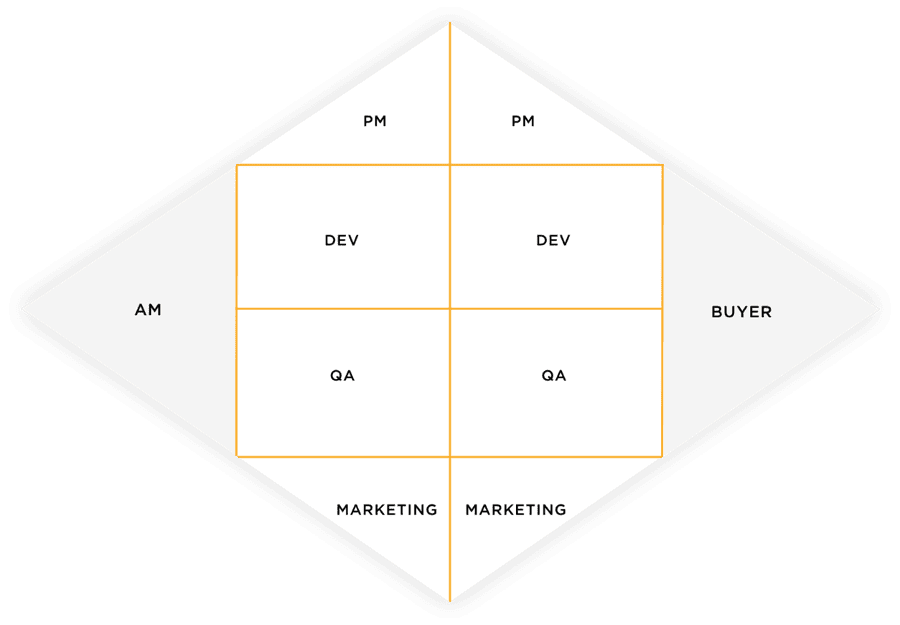TL;DR: The traditional client-agency relationship doesn’t work. The outdated bow-tie structure means you’re relying on two individuals each to act for their entire organisation. At Sonin, we’ve flipped this on its head. We connect each department with their counterpart. This lets us embed ourselves in our clients’ businesses, gaining a much better understanding of their goals and helping them build the best products possible.
The problem with the traditional client-agency relationship.
The traditional client-agency relationship is broken. It takes one key contact from each company and makes them the main channel for every department. The only reason it remains popular is that it means less investment for each side.
This may work for low-cost, uncomplicated solutions. But when it comes to developing a bespoke digital product, this ‘bow-tie’ model just doesn’t cut it.
Why? Two people can’t communicate the challenges and goals of two entire organisations.

For example, it doesn’t matter how well each contact knows development. They don’t know as much as the developers. And it doesn’t matter how good a grasp they have of marketing. They don’t know as much as marketers.
Similarly, having corresponding departments speaking to one another through two contacts often ends up in a game of broken telephone. Messages get miscommunicated and context is lost.
Relying heavily on two individuals leads to less understanding on both sides. And the lower the understanding of a client’s business, the less aligned the agency is and the worse the product will be.
Luckily, there’s a better way.
There’s a better way to run your project.
At Sonin, we’ve flipped the traditional client-agency relationship onto its head. Instead of putting two people in between everyone, we put project managers in touch with project managers. We connect developers with developers, designers with designers and marketing with marketing.
Our Account Managers then sit behind each department. This way, they’re supporting the specialists instead of trying to communicate on their behalf.

Better Aligned
What this means is that, at Sonin, we get a much better understanding of our clients and their businesses. Each of our departments is completely aligned with their counterpart. This way, they’re working towards the same goals as an embedded team – not a siloed extension.
Skill Sharing
Another key benefit of this embedded approach is the transfer of knowledge and skills. Our clients’ internal teams work closely with our product development experts who have years of experience. This close-knit way of working together means that we’re able to share tried and tested agile methodologies and disciplines.
This reduces waste, helping our clients to build the best products possible with self-sufficient and skilled teams.
Future-Proof
Finally, the Diamond Account Management model also removes the reliance on those two individuals for everything. So in the event where either contact moves on, there’s almost no knowledge lost and no interruption to the product development process.
Final Thoughts
To build the best product possible, you need something more than an agency. You need a partner, an embedded team that’s aligned with your internal one.
A diamond relationship means everyone involved understands their roles and requirements. But it also ensures that every stakeholder understands the overarching business goals, the product strategy and the part they play in driving its success.